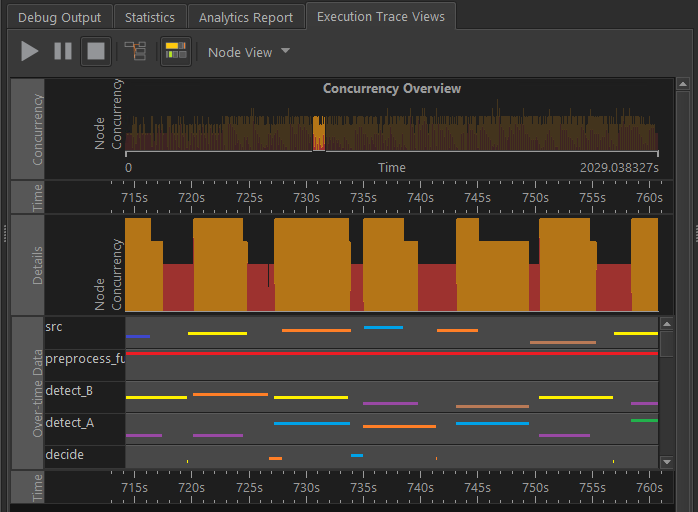A newer version of this document is available. Customers should click here to go to the newest version.
Visible to Intel only — GUID: GUID-0BE0056F-BDE2-4358-A849-F2AC69342A27
Visible to Intel only — GUID: GUID-0BE0056F-BDE2-4358-A849-F2AC69342A27
Designer Workflow
The Flow Graph Analyzer designer workflow allows you to describe your graphs visually, set meaningful properties, and generate the flow graph framework code in C++. Before generating the framework code, you can also perform rule-checks to make sure the described graph does not have any potential issues that could lead to incorrect execution or a poorly performing graph. The generated code can be compiled and run without modification in many cases. Sometimes, the generated code may have to be modified to provide meaningful inputs or outputs.
Specifically, the tool supports the following capabilities necessary for visual design of graphs:
- Choose from a variety of available node types to build a graph.
- Express the explicit relationships with edges.
- Edit properties of these nodes.
- Perform common editing operations.
- Save the described graph and reload it later.
In addition to these basic capabilities, the tool provides the means to:
- Validate each node to ensure that flow graph rules are not broken.
- Perform basic rule checks on a graph to identify potential performance problems.
- Export the graph as a C++ framework code that uses the Intel® oneAPI Threading Building Blocks (oneTBB) flow graph API.
- Export the graph as a PNG image.
This section walks through the design workflow and the capabilities that support it. The following figure shows the simple flow of the design process.

